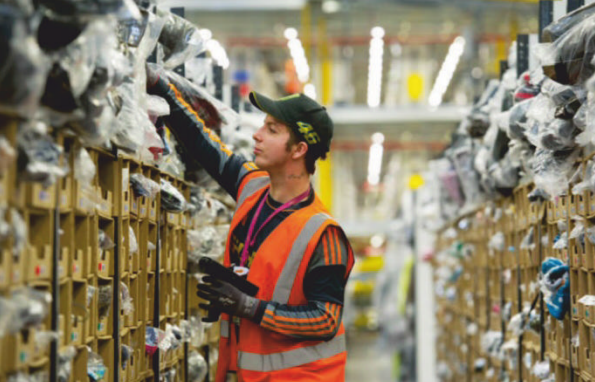"In warm weather, fewer people wear socks," says Paul Rotstein of Gold Medal International, a wholesaler in New York.
“在溫暖的天氣,穿襪子的人更少,”紐約批發商Gold Medal International的Paul Rotstein說到。
People may not sport socks in the summer but his firm starts shipping them to retailers in July, ahead of the start of the school year.
夏天人們可能不穿運動襪,但他的公司在7月份開學前就開始把襪子運送給零售商。
There is, however, a big lag before he is paid. He normally uses trade-credit insurance to protect against the risk that his invoices go unpaid,
但在他拿到錢之前,時間上存在一個大的延遲。通常,他會購買貿易信用保險來防止貨單不付款的風險,
but this year the insurers have slashed the amounts they are willing to cover by 50-90%.
但今年保險公司已經將他們愿意承保的金額削減了50至90%。
That leaves him with two options: shoulder huge credit risk himself, or walk away from orders.
他有兩個選擇:自己承擔巨額信貸風險,或者放棄訂單。
Mr Rotstein's dilemma underscores the role of trade finance, an unglamorous but critical bit of the financial system.
Rotstein的困境凸顯了貿易金融的作用,這是金融體系中的一種不起眼卻很關鍵的部分。
Many firms are owed a large amount by their customers in the form of receivables; in total the amount is worth around 20% of global GDP.
許多公司的客戶都以應收賬款的形式欠了公司一大筆錢;總計價值約為全球GDP的20%。
Some firms bear all the risk of nonpayment themselves. But others look to an insurer to protect them from default,
一些公司自己承擔了拒付的所有風險。但其他公司指望保險公司保護他們不受違約影響,
or take out specialist loans backed by the invoices.
或是取得由貨單支持的專項貸款。
Together these financing solutions underpin four-fifths of cross-border transactions, which are worth $15trn a year.
這些融資方案支撐了五分之四的跨國交易,價值15萬億美元一年。

Trade financiers face three problems created by the covid-19 pandemic (and the accompanying recession).
新冠疫情(以及伴隨而來的經濟衰退)給貿易融資商造成了三個問題。
It has disrupted normal operations by slowing the travel of documents; it has raised the risk that existing loans will sour;
文件傳遞速度的減慢擾亂了正常的運作;增加了現有貸款變成壞賬的風險;
and it has made lenders more cautious about making new loans.
并且讓銀行對發放新貸款變得更加謹慎。
Take operational troubles first. Trade finance is notoriously paper-based.
首先是操作問題。眾所周知,貿易金融以紙質檔為基礎。
Processing credit requires involved parties, from financiers and carriers to warehouse managers and customs officers,
處理信貸需要所涉及到的各方,從融資方和承運方到倉庫經理和海關官員,
to exchange an average of 36 documents and 240 copies. But lockdowns trapped bits of paper in shut-down offices.
平均交換36份文件和240份復印件。但封鎖將少量文件鎖在了關閉的辦公室里。
Printing became a palaver. When couriers eventually got to banks, they often found no one there.
打印成了空話。當快遞員最終來到銀行,他們通常發現那里一個人都沒有。
Financiers have been forced to be nimble.
融資方被迫變得靈活。
Banks started accepting scanned signatures and documents.
銀行開始接受掃描簽名和文件。
A cargo-firm executive says it issued four times as many electronic bills of lading—receipts detailing goods on-board a ship—in March as it did in February.
一家貨物公司的高管說,公司三月簽發電子提單——說明船上貨物的收據——的數量是二月的四倍。
That has helped limit delays, though some in the industry worry that rises in fraud could follow.
這有助于限制延期,盡管一些業內人士擔心,隨后可能會出現更多的欺詐行為。
A second concern is that the existing stock of credit turns sour. Trade finance has long been super-safe:
第二個擔憂是現有的信貸存量會惡化。長期以來,貿易金融都超級安全:
annual default rates on letters of credit averaged 0.11% of transactions in 2008-18, less than a tenth of those for corporate loans.
2008年至2018年,信用證的年違約率平均為0.11%,不到企業貸款年違約率的十分之一。
But insurers already report payment delays. A rise in bankruptcies would make matters worse.
但保險公司已經通報了付款延遲的情況。破產公司數量的增加會使問題更加糟糕。
Coface, a trade-credit insurer, expects these to rise by a third worldwide by 2021.
貿易信貸保險公司科法斯集團預計,到2021年,數量將增長三分之一。
譯文由可可原創,僅供學習交流使用,未經許可請勿轉載。



